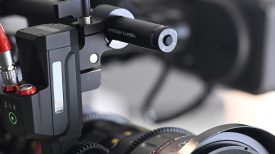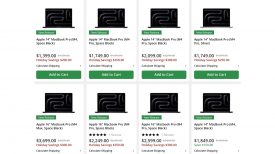
I’ve had Blackmagic Design’s new Micro Cinema Camera for a couple of weeks and personally I am very excited by this tiny camera.
I feel the need to own a tiny camera for two reasons (I also have an FS7 and an EX1). Firstly to mount it in silly places, either on a stabiliser or hard mounted to vehicles and the like. Secondly to have a fun camera to take to the park, or back home for a family weekend, or even do a simple corporate or news assignment with.
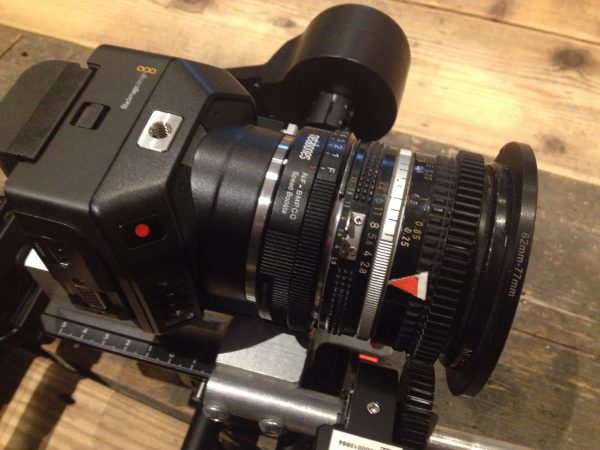
Tiny cameras
Over the years I have had a lot of fun with the Sony NEX5n. I’ve had two (the first died after a small drop) – I had an expensive cage fabricated for that camera and with the cage it served me very well. I’ve also had fun with GoPros but the lack of shutter control is enough to make the share price tumble.
The NEX5n is a little long in the tooth now so last year I bought a GH4 and YAGH box. This has worked well for me as an interview ‘B camera’, (with a YAGH unit, XLR connections and a V-lock battery) but not as a ‘tiny camera’ with no accessories. And ultimately the onboard 8-bit codec doesn’t quite have the flexibility to make it work well against the 10-bit 4K Sony S-Log my FS7 produces.
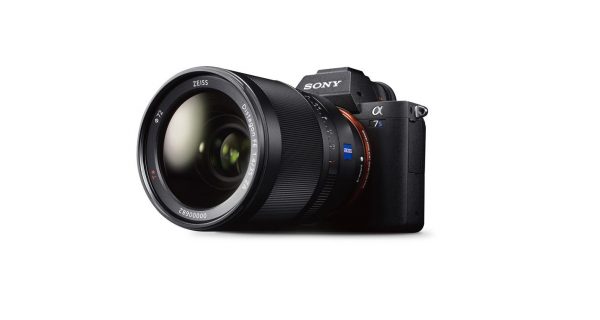
Many people see a Sony A7s camera as their tiny camera. Personally I find the Sony menus and multifarious crop options to be a drag. The short battery life, rolling shutter, single 1/4″ 20 mount point, mini HDMI, and odd results with 8-bit S-Log make the A7 cameras uninteresting to me.
Roll on the Micro Cinema Camera. Four 1/4″ 20 screw points, large HDMI, reasonable battery size of a type I own from my 5D Mk2 days, and 1080p 10-bit ProRes. 1080p? Yes. I feel that with a small sensor, jamming 4K’s worth of pixels often leads to difficulties, especially when you compress your 4K to 60Mbps (the NEX5n is 25Mbs for HD – a higher data rate per pixel).
I love the simplicity of Blackmagic cameras. Picture profiles? Flat or Not Flat. Simple. Frame rates, it has a few – colour temperatures, it offers some of them too. What else does one need?
With a Sony the options are baffling. The FS7 for example can only do certain frame rates in certain resolutions, it cannot offer other frame rates if you are in PAL, if you change to NTSC you can’t play back your clips when in PAL mode. On set under pressure this can all get a bit baffling.
Rigging
Back to the Micro, well I also bought a Ronin M and most certainly the thin profile of the camera will help you rig it. By comparison the GH4’s HDMI lead was at constant risk of clashing with the Ronin body. The Blackmagic also just feels ‘right’ when you’re handholding it. It cradles in one hand, almost like just holding a lens.
Testing the Micro Cinema Camera mounted on the Ronin M gimbal in the car.
So it is looking good to make the perfect gripping camera, mounted on a Ronin or hard mount. And I hope to build it up to make a fun walkabout camera matched with my old Rode videomic from my 5D Mk2 and SmallHD DP502 monitor. The camera is so compact the 502 feels big and heavy by comparison (A side note: I hope to use the headphone jack on the 502 to monitor audio). Clearly for ‘serious’ audio jobs I will use one of my XLR cameras, or employ a sound recordist.
I have a short floppy HDMI lead which feels like it is going to be OK as a jump between the camera and monitor although I would of course prefer SDI.
In the field
This weekend I shot a short comedy film and thought I would add a few shots with the Ronin/Micro combination as a kind of test. Shooting with a largish cast and crew hanging over one’s shoulder is where the chickens come home to roost. The camera was duly mounted via the Ronin on a small jib.
Firstly I was reminded of my desire never to use a ‘5D’ battery ever again. By the time we had done a couple of rehearsals and a bit of actor-director chat had occurred the first battery was dead. I really dislike small batteries with no level meters. The Micro does hold out hope on this front as it will accept power via the rather wacky COM port and I’m sure people are rushing to offer options. I will probably use BPU batteries which, fitting my EX1, FS7 and having level meters are my go-to batteries when I’m not using V-lock.
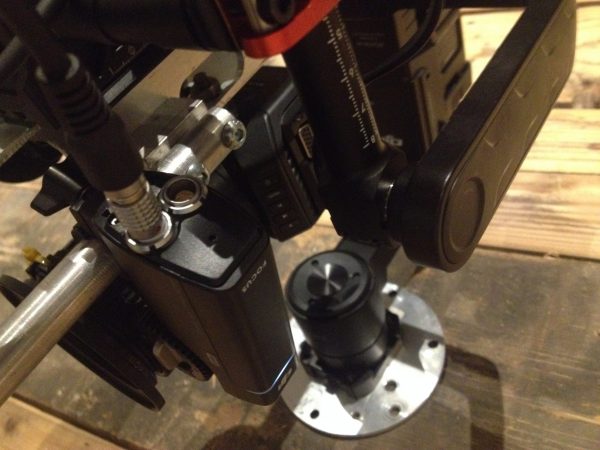
Now, that simple menu? Not so simple when the camera is upside-down, hanging from a crane with the menu also upside-down in the monitor, wrestling tiny buttons on a live gimbal. Personally I find the buttons tiny, and the menu a little unintuitive. I also struggle with the GoPro menu and am completely lost on Sony menus this isn’t a fault unique to the Blackmagic!
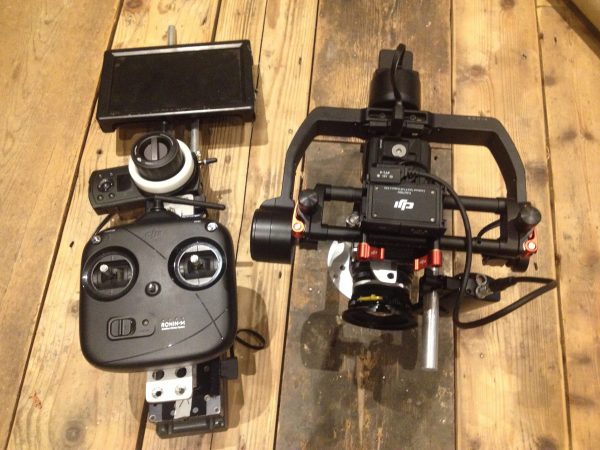
Now the BM may feel tiny, but on the Ronin gimbal it is still quite big. One reason not to buy one right now is to wait and consider the Osmo and X5R – a combination that could be even more small, simple and powerful with an excellent app that will control everything. Controlling and monitoring the Ronin/Blackmagic combo is still always going to be a jumble of wires with a heap of menus to dig into.
It is also a shame that the camera had to be mounted upside-down (or the right way up on an upside-down gimbal). If Blackmagic had gone the final mile they could have offered three 1/4″ 20 holes on the top side, this would have made the camera orientation agnostic. Personally I find single 1/4″ 20 threads to be close to useless because I always want to double mount any accessories to make sure they cannot come unscrewed.
The camera certainly needs a cage – I will make my own, others sell them. I note the Skier cage has only one hole on the bottom, which seems wrong to me. I would therefore suggest checking out Wooden Camera for a commercially available cage.
Lensing and picture
I’m lost with the maths but I bought a Blackmagic Pocket Speedbooster. It is a very snug fit and seems to give a FOV and DOF look very similar to S35. This will live on the camera and work well with my old manual Nikkor glass.
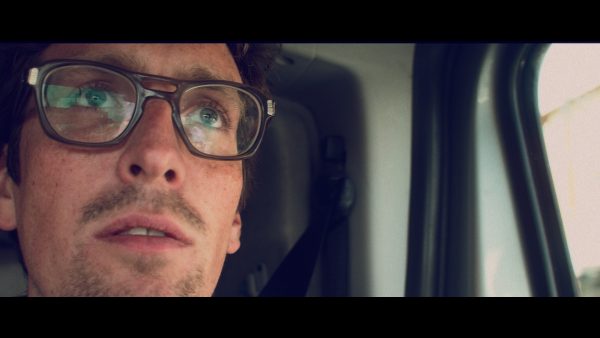
And finally, the picture. 10-bit ProRes. Oh yes. To me, and I have only done a very few shots so far, the picture just looks pretty, owners of the Blackmagic Pocket probably understand. I don’t think there is really a technical way to evaluate ‘pretty,’ the dynamic range is not huge but when one blows the highlights one is not presented with problems and that is worth a lot to me and other shooters who are not scared of flare or backlight. A LUT in Resolve or a tweak of curves or saturation and the image becomes rich and malleable.
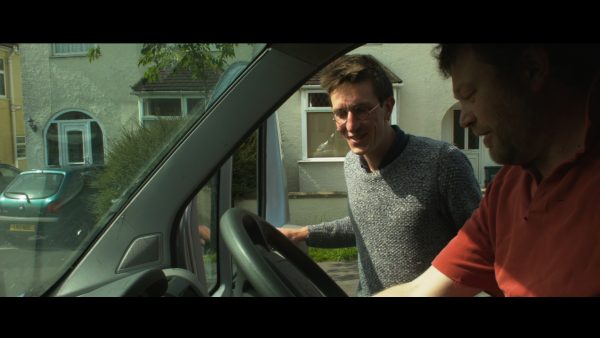
Overall then a very positive first couple of weeks and I’m looking forward to finishing the build – both for rigging and using the camera for fun.




